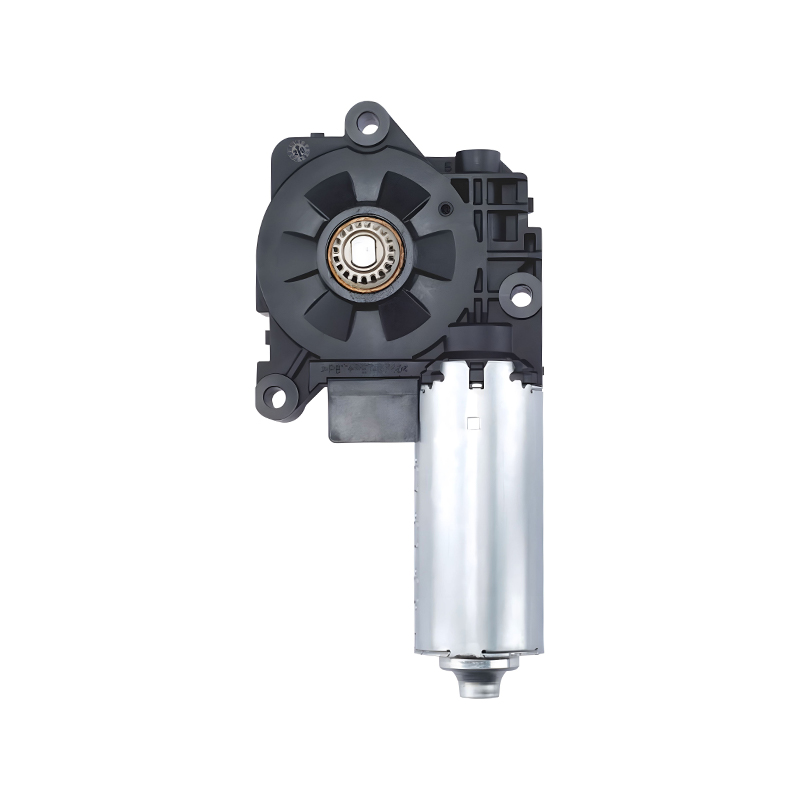As automotive designs continue to evolve, panoramic roofs have become an increasingly popular feature, offering drivers and passengers an enhanced sense of openness and connection with the outside environment. To support this trend, a new sunroof motor has been developed and optimized specifically for panoramic roof designs. This motor addresses unique challenges associated with larger roof panels and integrates seamlessly with existing vehicle systems. Throughout its development, particular attention was paid to ensuring compatibility and reliability with related components, such as the auto window motor and bracket motor.

The introduction of panoramic roofs has changed the landscape of vehicle interiors. Unlike traditional sunroofs, panoramic roofs span a larger area, often covering more of the roof space. This expansion requires sunroof motors that can handle heavier panels while maintaining smooth operation and low noise levels. The new sunroof motor meets these requirements by incorporating a refined gear mechanism and enhanced torque capabilities, providing steady and precise control of the large glass panels.
A key consideration in the motor's design was its interaction with the auto window motor, which controls the up-and-down movement of the vehicle's windows. Both motors share similar mechanical and electrical environments, so it was essential to ensure that the new sunroof motor's operation would not interfere with the auto window motor's performance. By optimizing the motor's electromagnetic compatibility and less electromagnetic interference, engineers succeeded in achieving a smooth and reliable interaction between these two critical components.
Additionally, the new sunroof motor works closely with the bracket motor, an integral part of the sunroof assembly that assists in positioning and supporting the sunroof panel. The bracket motor's role includes stabilizing the panel during opening and closing, as well as providing fine adjustments to ensure a secure seal against weather elements. The optimized sunroof motor communicates with the bracket motor to coordinate movements, resulting in synchronized operation that reduces wear and extends the service life of both motors.
One of the notable features of this sunroof motor is its compact form factor. Panoramic roofs often require space-efficient components because the large glass panels limit room for traditional motor housings and mechanical linkages. The compact design not only facilitates easier integration but also supports improved weight distribution in the roof area. This reduction in weight contributes to better fuel efficiency and vehicle handling, indirectly complementing the performance of the auto window motor, which similarly benefits from lightweight design improvements.
Durability is another area where this sunroof motor was given careful attention. Panoramic roofs are exposed to a wide range of weather conditions, including high temperatures, moisture, and dust. Therefore, the motor's sealing and protective coatings were enhanced to prevent corrosion and ensure long-lasting performance. These durability improvements also extend to the bracket motor, which faces similar environmental stresses. Together, these motors form a reliable duo that can withstand the demands of daily vehicle use in various climates.
Energy efficiency was a further consideration in the sunroof motor's development. Operating large panoramic panels requires a motor capable of delivering sufficient torque without excessive power consumption. By utilizing advanced winding techniques and optimizing the magnetic circuit, the motor reduces energy usage while maintaining responsive performance. This efficient operation is mirrored in the auto window motor, which shares design principles aimed at lowering power demands to support overall vehicle energy management.
Testing and validation of the new sunroof motor included extensive compatibility assessments with auto window motors and bracket motors. These tests simulated various operating scenarios, from frequent short-cycle usage in urban environments to longer, continuous operation during highway driving. Feedback from these tests helped refine the motor's control algorithms and mechanical design, ensuring smooth starts and stops, small noise, and reliable performance under different conditions.
Furthermore, the integration process for this sunroof motor has been simplified to reduce installation time and potential errors. The motor's interface is designed for easy connection with vehicle control units, and its physical mounting aligns with existing bracket motor configurations. This compatibility reduces the need for extensive modifications during vehicle assembly and allows manufacturers to maintain streamlined production processes.
In conclusion, the new sunroof motor optimized for panoramic roof designs represents a thoughtful advancement in automotive component engineering. It balances the demands of larger roof panels with the need for quiet, efficient, and durable operation. By ensuring smooth cooperation with both the auto window motor and the bracket motor, this motor supports the growing trend toward expansive, light-filled vehicle interiors without compromising reliability or performance. As panoramic roofs become more common, motors like this will play an essential role in shaping the driving experience of future vehicles.
Your email address will not be published. Required field are marked*